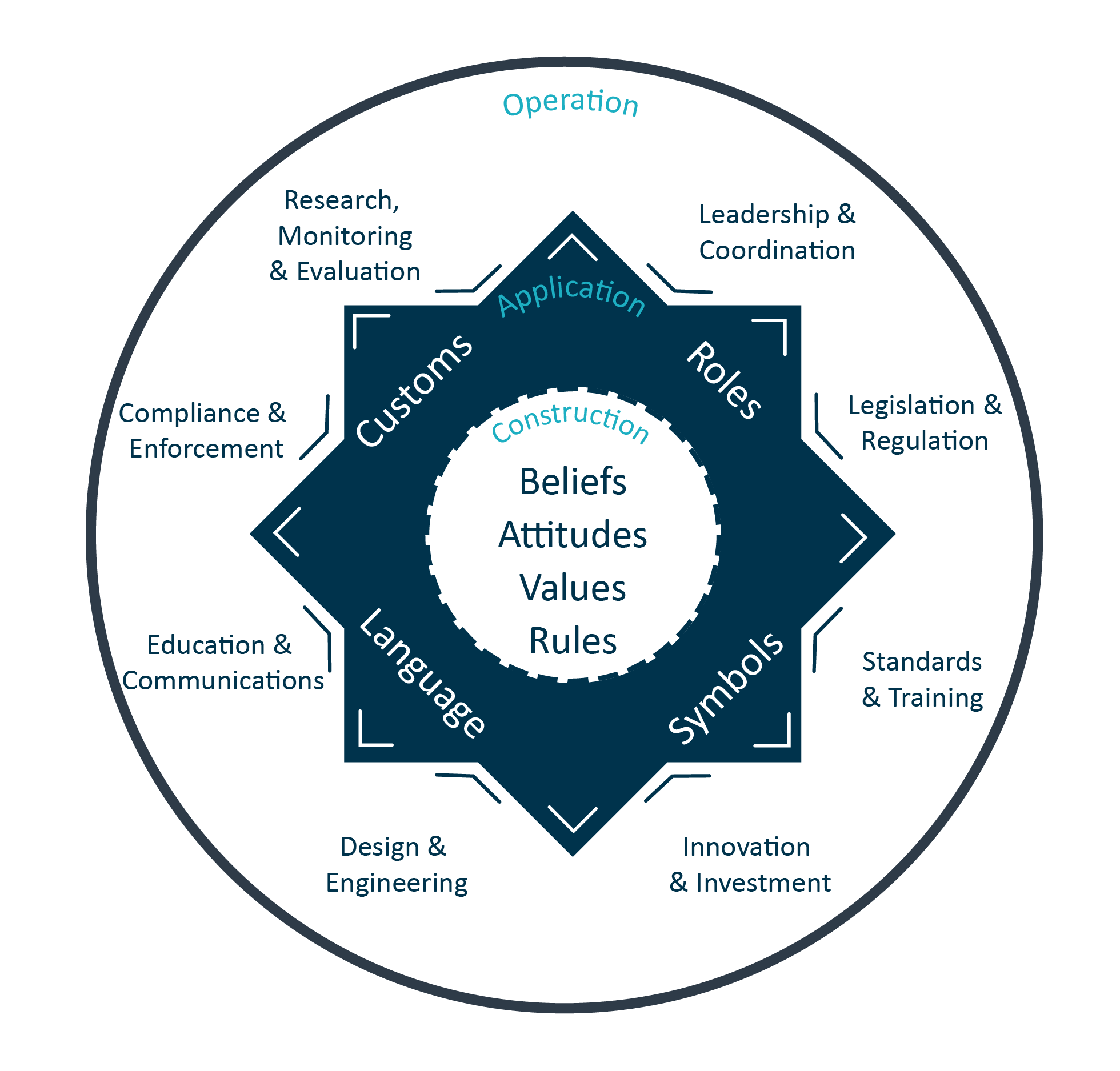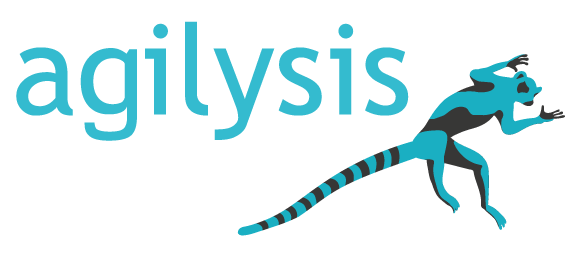Safe System
The internationally recognised way to eradicate death and serious injury on the road network.
Our services
Need some guidance on implementing the Safe System? It's deeply rooted in all of our work.

The Safe System Model (Agilysis 2023)
The Safe System is a concept in road safety which originated in Sweden and the Netherlands in the 1980s and 1990s and has since been adopted in countries and territories across the world.
On an international level, the approach is considered best practice for co-ordinating strategic actions with the aim of reducing road fatalities and serious injuries. (WHO, 2021)
The Safe System movement in England has been gaining momentum over recent years, which is essential to improve road safety.
Despite the increase in popularity, there is an emerging challenge of authorities implementing their own version of the Safe System, cherry picking elements to focus on and developing local performance metrics which are not nationally comparable. This dilution of a systematic approach risks compromising safety.
There is a compelling need for consistency in implementation and monitoring, and the identification of where further support might be required by gauging how ‘Safe System-ready’ authorities are.
Interested in joining a Safe System training course?
New to the Safe System? Take a crash course in under 4 minutes to get to grips with the model.
We know that getting all your stakeholders on board with complex ideas like the Safe System can be quite a challenge. Explaining the finer details and significance of such a concept effectively enough to rally the support needed for meaningful change isn't always easy.
In this short video we look at, and explain, the different elements that come together to form the Safe System model.

Safe System Cultural Maturity Model (Agilysis 2022)
Cultural Maturity
Recent studies have highlighted that the prevailing culture in the organisations responsible for delivering the Safe System is a vital component that can support or undermine our goals.
Developing culture involves a deliberate decision by leaders and requires considered investment in a range of action areas.
Whether you are working in national governments, enforcement agencies, local authorities, emergency services or fleet operators - ensuring that there is a deep understanding, shared language, performance expectations, and key roles in place will be essential to contribute efforts towards the safety of the system overall.
Reviewing your organisational culture and developing a cultural playbook introduces a new approach to investing in the kind of culture that will support our road safety ambitions. It also draws on an analysis of current culture to provide targeted advice, tools and techniques that can be used as we grow together as a community of professional practitioners.
Case Study
We work closely with our clients to understand your needs to ensure that we provide a high quality experience from inception through to completion.
Our wide-ranging experience in Data, Digitalisation, Partnership management and Policy has allowed us to work with countless Local Authorities, National Governments, Organisations and Charities to help them achieve their goals.
Our wide-ranging experience in Data, Digitalisation, Partnership management and Policy has allowed us to work with countless Local Authorities, National Governments, Organisations and Charities to help them achieve their goals.
A new Safe System focused road safety strategy for Transport for Greater Manchester.
Working with Transport Scotland to create a Safe System focused culture.
Frequently Asked Questions
If you have a question about the Safe System that isn't answered in the FAQs below, please contact us to discuss your needs.
These terms are often used interchangeably, and we would argue that they are definitely complementary concepts. Vision Zero, which started in Sweden in the mid-90’s, encapsulates an ethical position that we should not be operating a road transport network with an expectation that death and serious injury are inevitable consequences.
At a similar time, the concept of system safety (managing risks by analysis hazards and identifying interventions in a systemic way) was also developing credence and currency. A system that results in tragic outcomes like death and life-changing injury is not safe, so the ethical imperative of Vision Zero and the strategic response of the Safe System are intrinsically linked.
The ambition of the Safe System is zero road deaths and injuries, the tools for achieving Vision Zero are evidence-based interventions applied systemically.
Historically our approach to road safety is at odds with the Safe System. Firstly, we had an incremental approach to safety; as long as we were making improvements then we were satisfied. The Safe System acknowledging the ethical imperative to eradicate death and life-changing injury, so we are motivated by the end state, which is a network that is intrinsically safe for its users. That is why the Safe System is focussed on proactive and systemic responses to prevent the most serious crashes from happening, rather than being reactive when they do.
Secondly, our diagnosis of failures of the road traffic system in the past focussed on the road user; we assumed that the system could be safe if only we educated road users to behave better. Safe System recognises that even well intentioned, competent people make mistakes and they should not suffer the ultimate consequence for doing so.
This leads us to the third major difference, which is that responsibility is shared. If we want the system to be forgiving of mistakes then we cannot place all the responsibility on road users, some of whom will have limited capability whilst also being particularly vulnerable. So the system involves legislators, regulators, engineers, designers, maintenance contractors, vehicle manufacturers, enforcement authorities and civil society all playing their part to ensure that the system is forgiving and ultimately safe for all.
